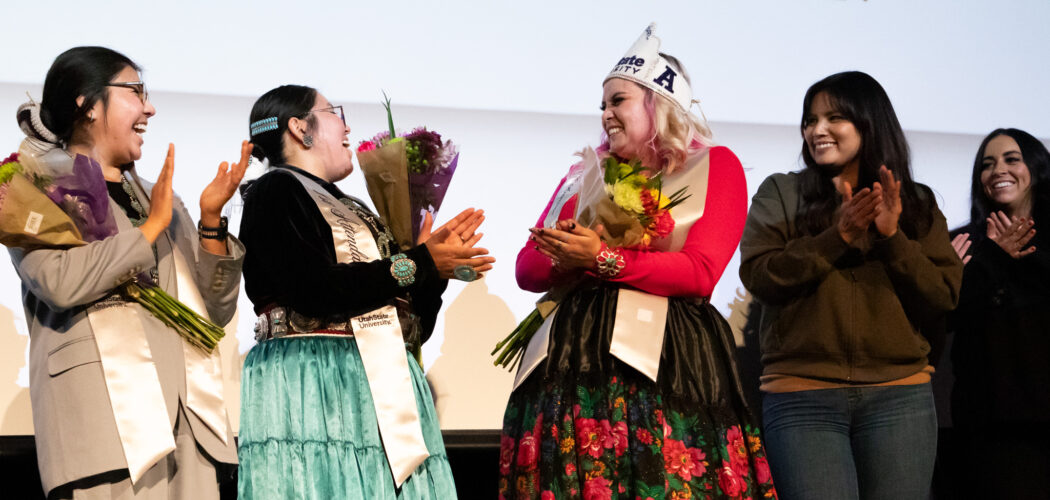Emily Kimbrough crowned Miss Native American
Last Thursday, three women at Utah State University competed for the prestigious title of Miss Native American. Emily Kimbrough, a student majoring in elementary education, walked away with the crown and the title of head woman.
The pageant, created and hosted by the Proposed Native American Cultural Center, was an annual event prior to the pandemic. This year was the first year the event happened since the pandemic.
Danny Piper, the faculty advocate for the Mentoring and Encouraging Academic Success Program, said the pageant creates a sense of community and helps educate non-Native students about Native American culture.
“You know, just trying to bring it back essentially kind of creates a sense of community for the students on campus,” Piper said. “It also educates others about Native American students on campus and just connects students to our community.”
The pageant serves multiple purposes, such as being a scholarship program. The winner also becomes the head woman of the 47th annual Equity and Traditional Ways Powwow and represents USU at three other powwows. The winner must complete 25 required service hours in the community. She leads the Native American Student Council in the homecoming parade and is also in charge of helping to plan the next Miss Native American Pageant.
The head woman’s role is one of prestige and honor. She leads the procession into the powwow and brings gifts to the head staff. Stacie Denetsosie, the Native American Student Council adviser, says the powwow taking place on April 6 is one of the main reasons the pageant takes place.
“A big part of why we even have the pageant is because of that powwow. It’s really important we have her, or else we have to find someone in the community,” Denetsosie said. “It’s really nice that we can look within our own students and find a Miss Native American.”
The NACC’s website provides additional information about the powwow.
“Traditionally, Pow Wow’s served a number of functions. They were held in the spring to celebrate the new beginning of life. Honoring warriors, personal achievements, and ceremonies for dropped eagle feathers are still part of Pow Wows today,” the site reads. “The Pow-Wow preserves a deep, lasting sense of family, pride and tradition. Behind the display of dance, music and vibrant regalia are sacred legends and meanings.”
Denetsosie acknowledges the role is demanding, but it provides incredible opportunities to Miss Native American and her first and second attendants.
“She has a pretty hefty role. The reason the role was developed was that it’s a scholarship program, so Miss Native American and her two attendants get a scholarship,” Denetsosie said. “It’s to promote their leadership in the community, and it’s a good opportunity for our students to represent USU.”
Emily Kimbrough, this year’s winner, said she loved the experience of competing alongside her friends, who are all officers of the Native American Student Council.
“It was nice to participate alongside my friends. It was a great bonding experience as well. I am also grateful to express myself as an individual and as a Dine Asdzaan,” Kimbrough said. “It was truly rewarding. Love my girlies.”
Kimbrough competed alongside Maylene Livingston, first attendant, and Ashley Betony, second attendant.
Those interested in volunteering at the powwow on April 6 or becoming a part of the Native American Student Council can go to the website usu.edu/nacc/.

